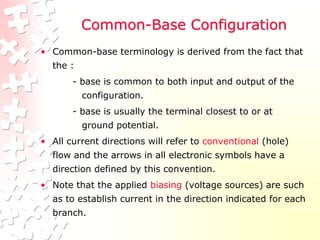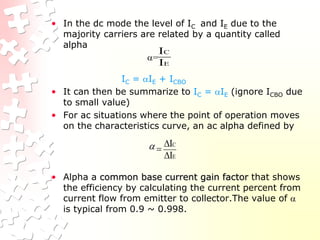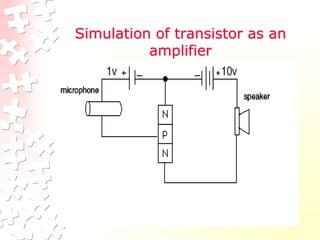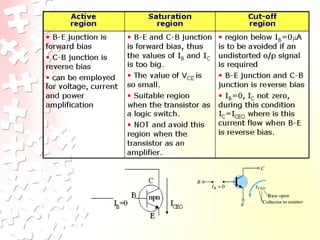Bipolar Junction Transistors (BJTs) are three-terminal semiconductor devices that use both holes and electrons to conduct current. There are two types, NPN and PNP, distinguished by the order of semiconductor layers. BJTs can be used as amplifiers and switches by applying forward or reverse bias to the base-emitter and base-collector junctions. Key parameters include current gain (beta), maximum voltage and current ratings, and power dissipation limits. BJTs are commonly configured as common-base, common-emitter, or common-collector amplifiers depending on the terminal used as the signal reference.











































